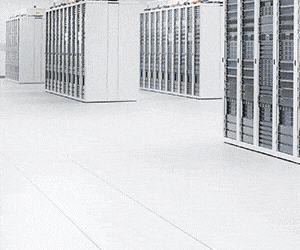How Do I Optimize Cooling For The Lowest Power Use?
The key to proper cooling is airflow. Mount equipment so that it supports front-to-back airflow, then design cooling to blow cold air directly onto the servers. Place large ducts behind the servers to pull hot air away from the racks. Measure your equipment to determine whether it can fit in contained cabinets that channel hot and cold air. Taking advantage of local resources, such as cold outside air during winter months, increases efficiency, though costs initially may be higher to get a new setup off the ground.
Does Power Distribution Play A Part In Energy Efficiency?
Backup power systems need to be rightsized for anticipated running loads. Having overcapacity in backup power leads to inefficiencies and higher capital and maintenance costs. Now that data centers are shrinking instead of growing, teams should use existing power as a maximum rather than guessing about growth. Use smart power distribution units with energy monitoring, and add power monitoring for cooling as well. To understand precisely where all the power is going, bring those monitors into a central dashboard.
RELATED: The benefits of lithium batteries for power use.
How Do I Optimize Power Use With Existing Equipment?
Knowledge is power — in this case, literally. Virtualizing and compacting virtual machines into the most power-efficient servers allows teams to remove older, inefficient devices. The power monitoring system gives all of the information needed. In some cases, it pays to replace older equipment with newer, more efficient devices. Anything that requires a 20 amp (or higher) plug should be viewed with extreme suspicion in a downsized data center. Check with vendors about any of your onsite appliances, such as firewalls; many of those can be virtualized to provide additional space and power savings.
What Other Habits Should I Change To Save Power?
Rethink the IT manager’s typical aversion to shutting down servers, especially if you know that you have cyclical use, such as eight hours a day, five days a week. If you can shut down (or hibernate) virtual machines during evenings and weekends, you may be able to take down hypervisors as well. Sophisticated virtualization products can be load-aware, shutting down and starting up hypervisors as needed to handle loads. This will save both power and cooling costs.











